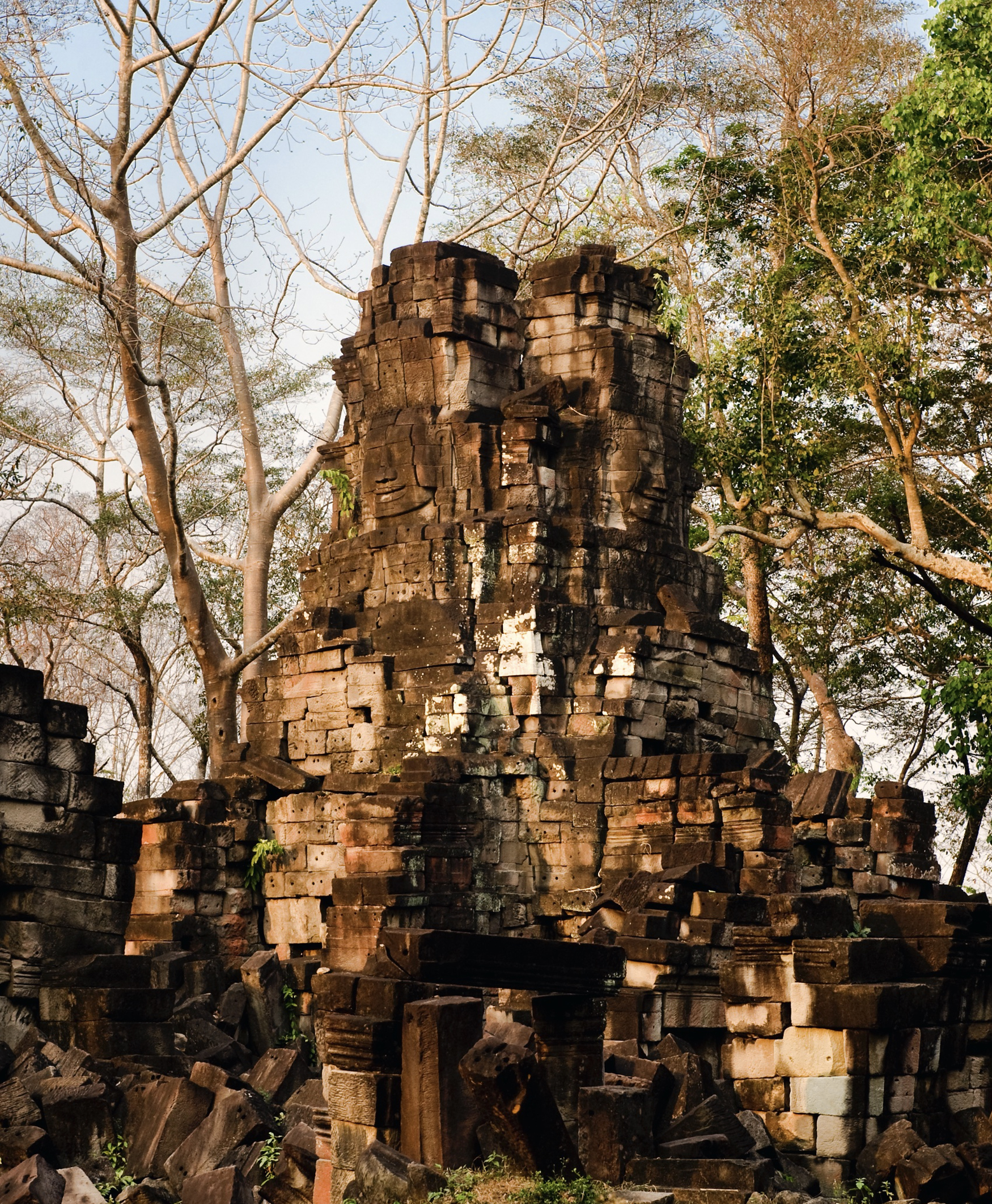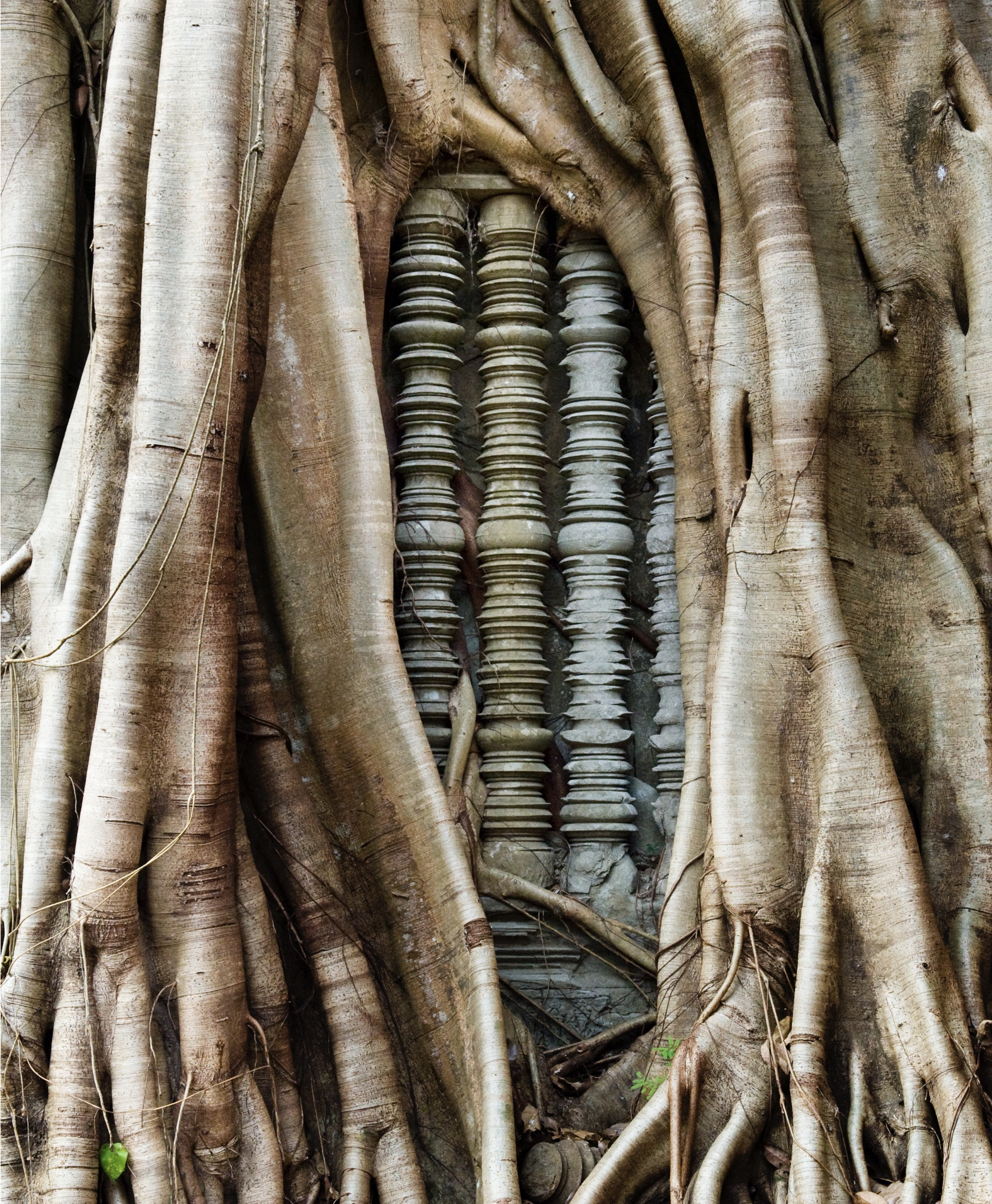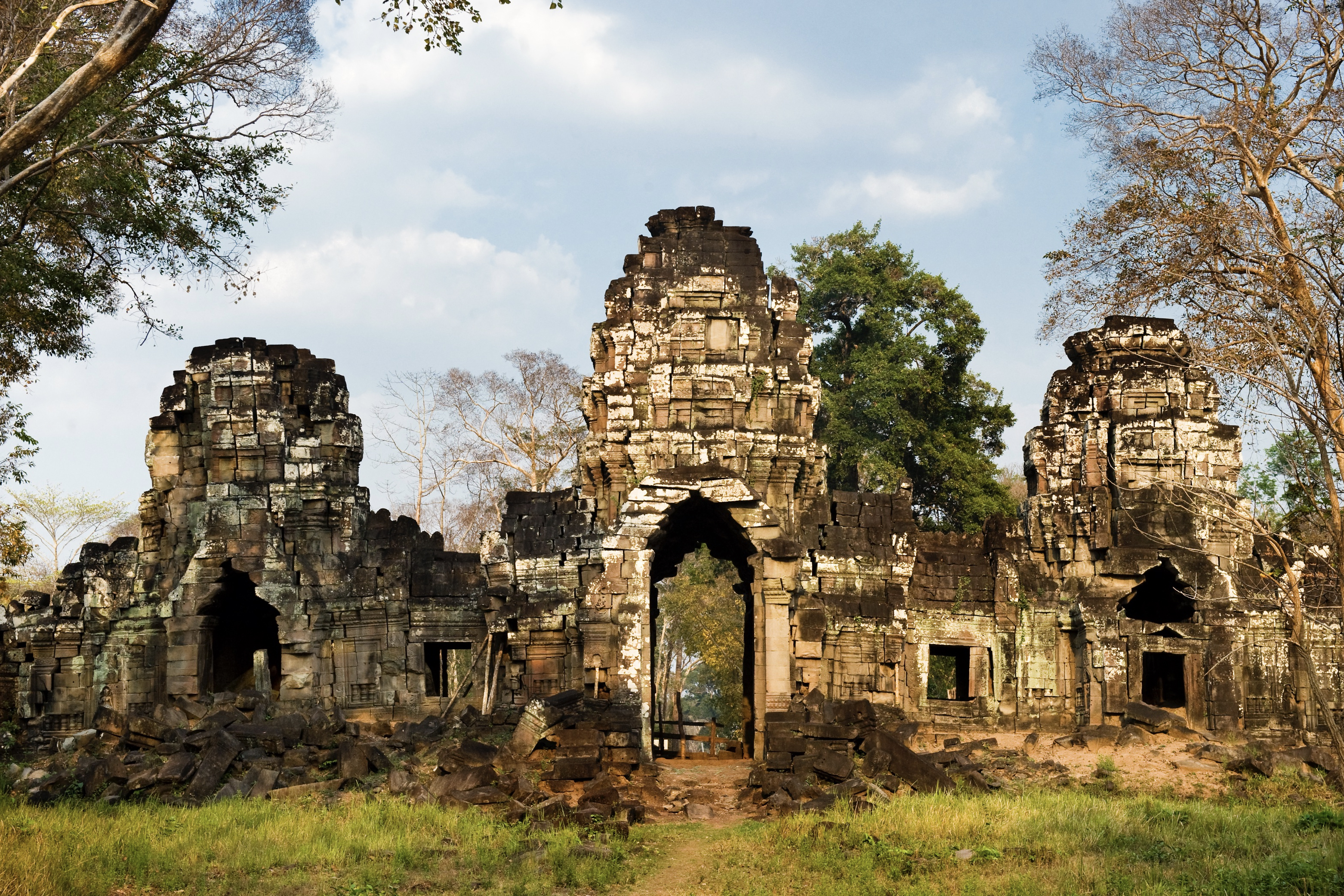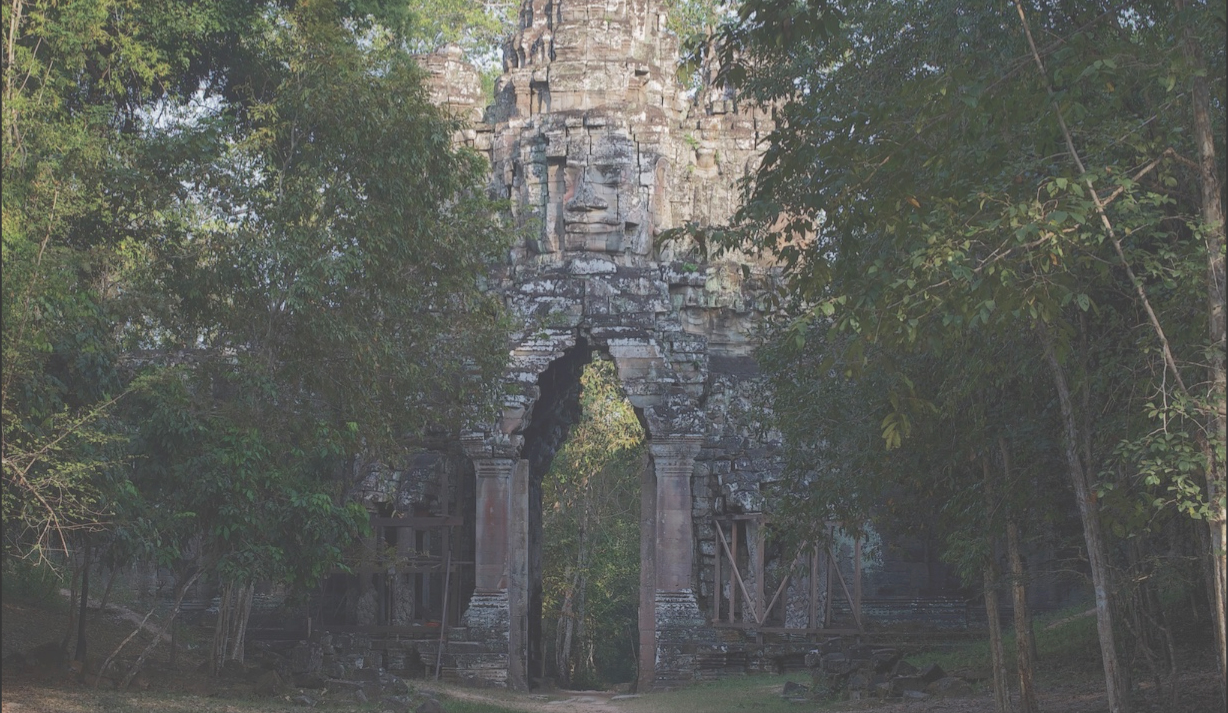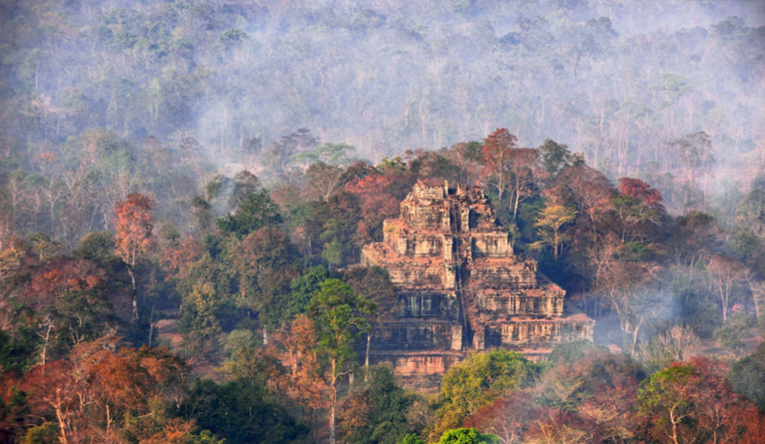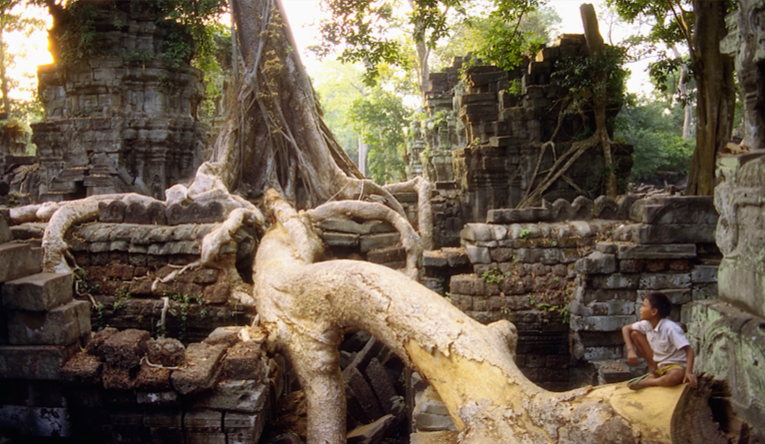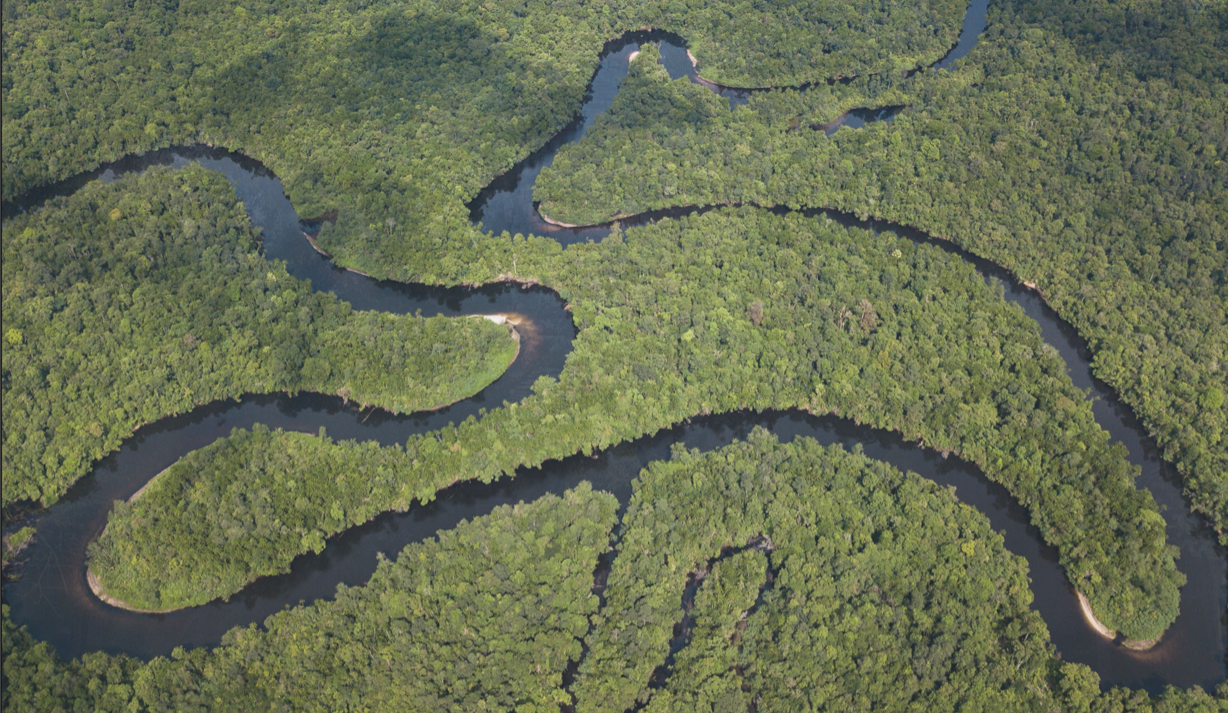Leaving your hotel at dawn we take the short transfer out to Siem Reap airport where the helicopter company is based. Once clearing some basis formalities you will meet your expatriate pilot (most are either Australian or New Zealanders) for an introduction and safety briefing.
The helicopter is allowed to depart at first sunlight, meaning the first period is spent viewing the glow of the sun on the Angkor temples and the lifting of the mist on the plains as you fly at low levels towards Preah Vihear province in the north-east.
Preah Khan of Kompong Svay (not be mistaken with Preah Khan temple in Angkor), also called Prasat Bakan by the locals, is a remote archeological site located 100 km from Siem Reap as the crow flies in Preah Vihear province at the eastern end on the ancient royal road from Angkor.
Preah Khan is the single biggest temple complex built during the Khmer Empire occupying an impressive footprint of about 22 kilometers square, 11 times larger than Angkor Wat and 2 times larger than the city of Angkor Thom. Because of its remote location (more than 200 km one way from Siem Reap including about 70 km of unpaved road for those visiting by road) it receives less than 20 visitors daily, if that.
The layout of the temple is unique compared to the other sites in Angkor as it is oriented northeast. It has been proposed that the temple is aligned with the raising sun during thee summer solstice.
A large baray of 3 km long lies on the east with a temple called Preah Thkol in the middle similar to the West Mebon in Angkor. It was built between the 10th and 13th centuries in different stages during the reigns of Kings Suryavarman I, II and Jayavarman VII. The influence of Jayarvaman VII is clearly visible in Prasat Preah Stun which has with a four-faced tower similar to the Bayon temple
The rediscovery of Preah Khan is credited to French explorer and artist Louis Delaporte who lead a expedition there in 1873. At the end of their visit they took many statues which are now at the Guimet museum in Paris : among them, a naga garuda and an elephant statue from Preah Damrei (see picture below).
Because of its remote location and lack of security, the site was badly sacked during the 1980’s and 1990’s and even more recently in 2003. Even so, some beautiful pieces like doors and lintels are still there. The causeway crossing the moat (mostly dry like in Beng Mealea) has many garuda carvings on both sides. Exploring the site can be quite difficult because of the dense vegetation there and the absence of clear paths but this all adds to the rich sense of exploration.
The heat can build up quickly out here, so depending on interest, stamina and enthusiasm we cover most of the site prior to 11am and then we pause for an early light lunch under the shade of a tree overlooking the ruins before making our way back to Siem Reap by helicopter.
PROGRAM CONCLUDES

